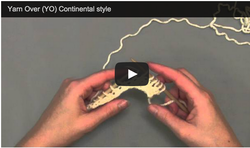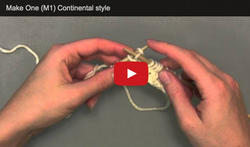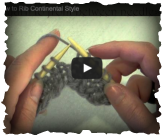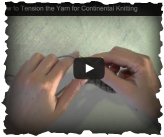How to K2tog (decrease) continental style
More videos you might like...
 How to YO (yarn over) continental style How to YO (yarn over) continental style
YO (yarn over) continental style
The yarn over increase is the simplest increase stitch. It can be tricky to know that you've yarned over on the purl vs knit side of the fabric so it is important to know what it is. |
 How to M1 (make one) continental style How to M1 (make one) continental style
How to M1 (make one) continental style
The Make One stitch is another type of increase stitch and has many variations that all produce a slightly different end appearance in your knitting. |




